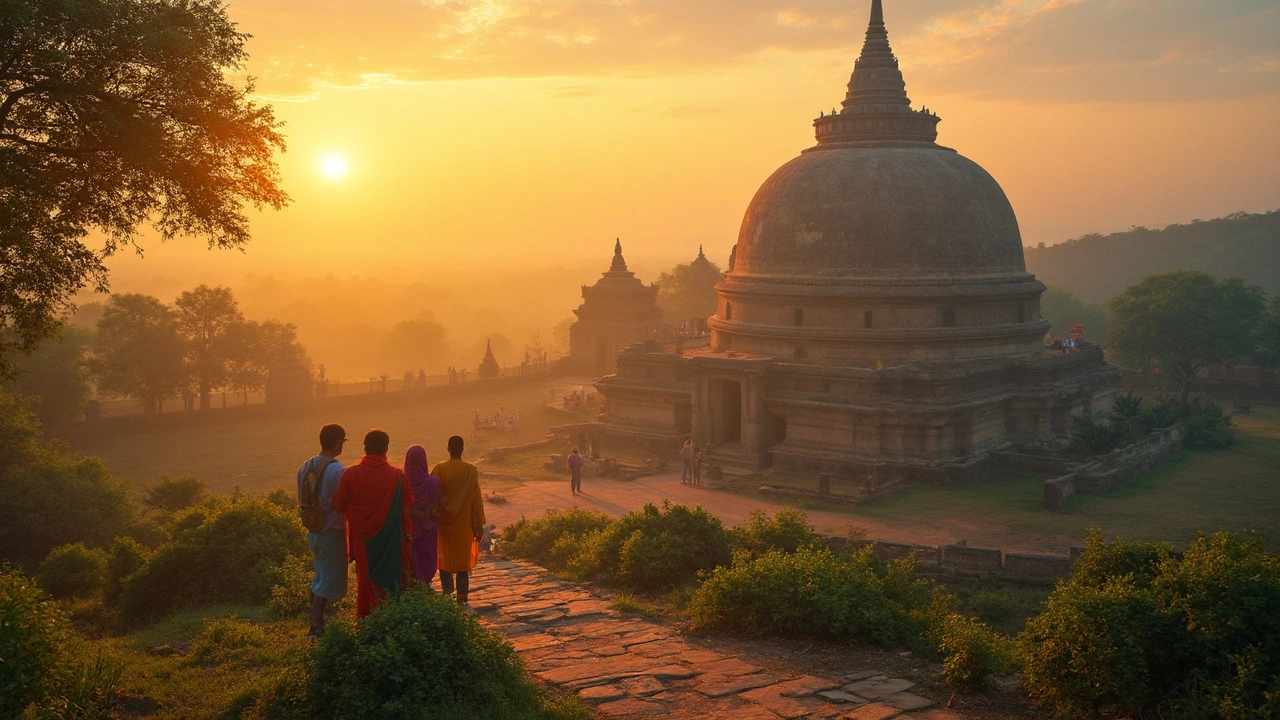Sanchi Stupa: History, Highlights & Travel Guide
If you’ve ever wondered why Sanchi keeps popping up in travel blogs, you’re not alone. This ancient Buddhist monument sits in central India and packs a punch of history, art, and peaceful vibes. In the next few minutes, I’ll break down what makes it special, why it matters, and how you can see it without hassle.
What Makes Sanchi Stupa Special?
The main attraction is the Great Stupa, built around 100 BCE by Emperor Ashoka’s relatives. Its massive stone dome holds relics of the Buddha, and the surrounding railings are covered in carved panels that tell stories from Buddhist scriptures. Those panels are not just pretty; they give a clear look at ancient Indian life—what people wore, what they ate, and how they celebrated.
Another cool fact: Sanchi is a UNESCO World Heritage Site since 1989. That status means the world recognizes its cultural value and works to keep it safe. The site also includes three smaller stupas, a museum, and a sacred Bodhi tree that still draws pilgrims today.
Architecturally, the stupa follows a simple layout—circular base, cylindrical drum, and conical spire. But the detail is anything but simple. Each stone relief shows a scene like the “Great Miracle” or the “Wise and Foolish Monks.” If you pay attention, you’ll spot tiny gestures that signal deeper meanings, a habit that artists used to convey moral lessons.
How to Plan Your Visit
Getting to Sanchi is easier than you think. The nearest train station is in Vidisha, about 15 km away, and regular buses run from Bhopal (about 45 km) and Jabalpur (roughly 110 km). If you rent a car, aim to arrive early—morning light makes the carvings pop and crowds are thinner.
Dress modestly; it’s a religious site. Light, breathable clothing works best, and a scarf can be handy for temple interiors. Bring water, a hat, and sunscreen; the open area can get hot, especially in summer.
Spend at least two hours exploring the main stupa, the surrounding smaller stupas, and the museum. The museum holds original sculptures and offers context that helps you decode the carvings. If you have extra time, take a short trek to the nearby archaeological site of Udayagiri for more rock-cut wonders.
Don’t miss the sound of the evening prayer bell. It’s a simple ritual that adds a calm atmosphere and reminds you why this place remains a living spiritual center.
Finally, respect the rules: no climbing on structures, no loud music, and stay on marked paths. Following these simple guidelines keeps the site safe for future visitors and honors the monks who built it centuries ago.
Whether you’re a history buff, a spiritual seeker, or just looking for a cool photo spot, Sanchi Stupa offers a mix of awe-inspiring art and peaceful vibes that’s hard to find elsewhere. Grab a guidebook or use a local guide app, and you’ll walk away with a deeper appreciation for India’s Buddhist heritage.
